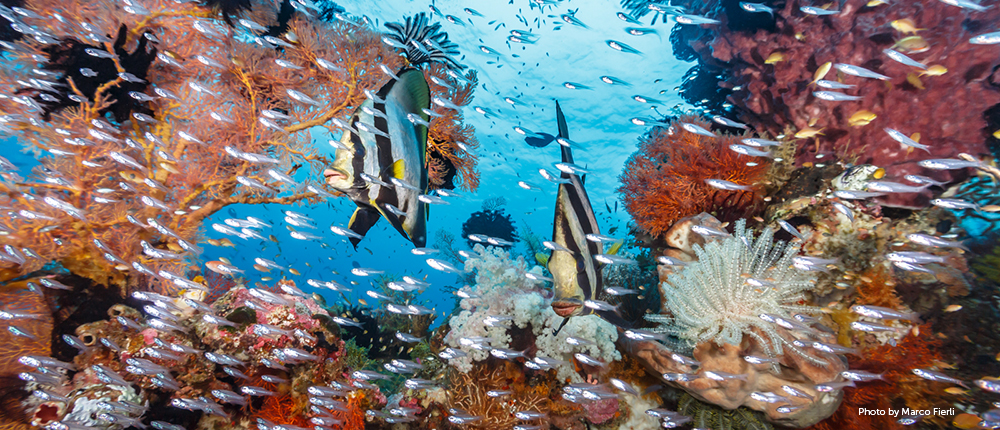The Magnificent Seven
A roundup of a few favorite Wakatobi dive sites
“Which sites are the best ones?” Wakatobi dive guides are asked this question from time to time. And though it might sound like a brush off, they can honestly answer “they are all the best.” After all, the private marine preserve created and supported by Wakatobi Resort is in fact home to some of the most pristine and bio-diverse coral reefs on earth. That said, of the 40-plus locations regularly visited by our dive boats, there are some that remain favorites with both staff and guests. And while we don’t like to play favorites, we are offering up these seven examples that showcase the diversity and quality of our underwater environment.

At the crest of the wall on Wakatobi’s House Reef, hard corals begin to transition to soft corals and sponges. Photo by Walt Stearns
House Reef
It’s been called the world’s best shore dive, and we agree. The Wakatobi House Reef is accessible directly off the beach in front of the resort, including seagrass beds and healthy reef top right off the beach. It’s only 73 meters from the shoreline to the drop-off. With well-protected schooling fishes and the jetty full of resident fish, snorkelers find here plenty of attractions without the need for taking a boat. Highlights include a great variety of fish, invertebrates, macro subjects, beautiful soft corals, gorgonians, tunicates, whips, sponges, and overhangs-all totaling a spectacular rainbow of color.
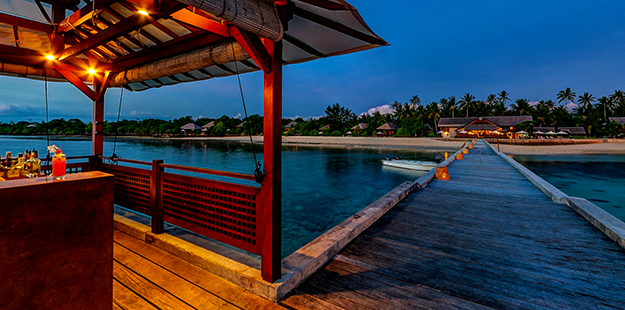
Guests opting to enjoy a cool drink before sunset can gaze down at divers and snorkelers as they take in a few more minutes below around the jetty. Photo by Wakatobi Resort
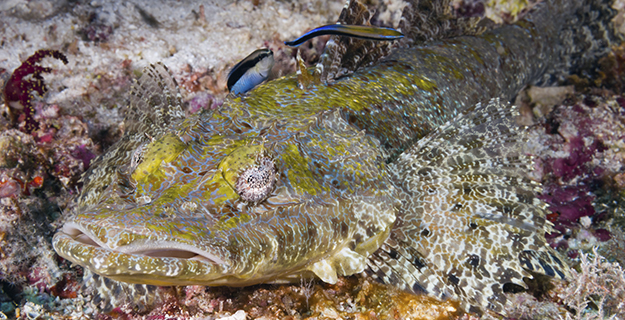
While they are commonly seen on the House Reef, particularly around the jetty, it still takes a keen eye to spot a crocodilefish because of its superb camouflage capabilities. Photo by Walt Stearns
The reef consists of a colorful wall with a shallow drop off that can begin in water less than two meters deep during low tide and as deep as four meters during high tide. In the short distance between the drop-off and the resort lies a vast ecosystem of turtle grass and isolated coral heads, a rich environment for odd and beautiful creatures such as frogfish, stonefish, cuttlefish, octopus, moray eels, blue spotted stingrays, ghost pipefish, jawfish, shrimp and goby pairs and more. It also provides a safe haven for a wide variety of juvenile reef fish. The bright blue mantles of juvenile giant clams seem to be wedged between some of the coral formations and rocks, most likely due to the shallow reef top and strong sunlight in this habitat.
“The House Reef never fails to captivate,” says snorkeler Pam Osborn. Pam and her husband, Wayne, are award-winning photographers who have visited Wakatobi seven times. Pam spends the majority of her time in the water on the House Reef. She loves it so much she created the iBook titled Wakatobi’s House Reef, which showcases hundreds of her images taken on this favorite spot. The book can be downloaded here.
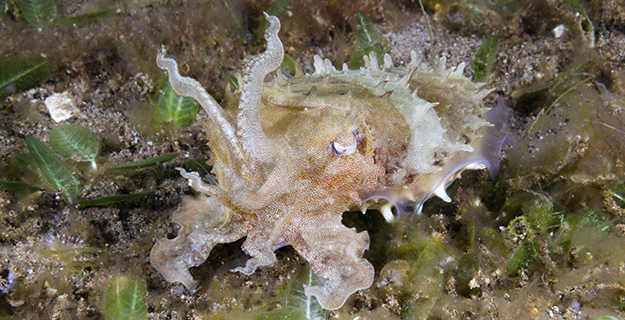
Part of the House Reef’s charm is its seagrass beds, which provide a wealth of unique marine life like this miniature cuttlefish. Photo by Walt Stearns
Entry to the House Reef is easy, as divers and snorkelers can make the short swim from shore, or descend stairs at the jetty. Pier pilings attract shoaling fish, and clustered nearby are dozens of anemones populated with iconic clownfish. The reef slope is covered with a dense coat of hard and soft corals, sea fans, sponges and tunicates, with overhangs that create resting places for resident turtles. Moving away from the jetty, divers and snorkelers have acres of coral slopes and shallows to explore. To reach more distant areas of the House Reef, the dive center operates a fleet of taxi boats. When tides are favorable, divers and snorkelers can use these boats to be dropped up-current, and perform leisurely drift dives back to the jetty.
The Zoo
Just a quick boat ride from the resort is one of the fishiest places in central Indonesia. Close to shore, a patch reef within a sand-bottom bay provides shelter for a wealth of interesting marine life. And a leisurely look among the corals will expose frogfish, ghost pipefish and leaf scorpionfish hiding in plain sight.
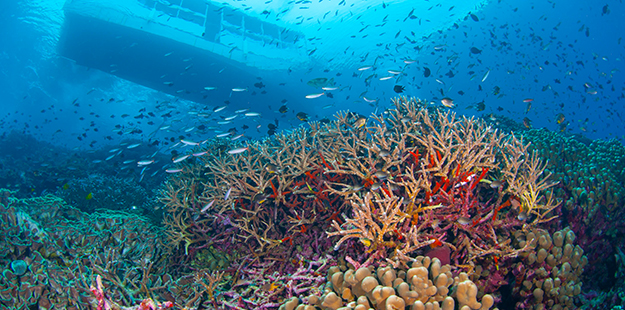
Drop in at Zoo and you’ll discover it’s as much a coral jungle as it is a critter haven. Photo by Mathis Weatherall
Closer scrutiny may reveal smaller prizes such as hairy squat lobster, while a survey of the bottom will yield bizarre burrowers such as the stargazer and the alien-like mantis shrimp. Check the mushroom anemones for their namesake mushroom pipefish, which is a small white pipefish with a triangular head that gives it the appearance of a small underwater python.
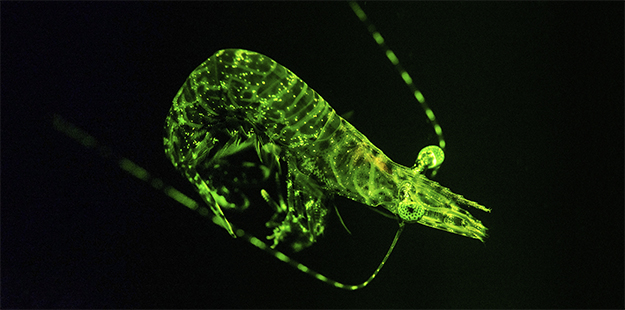
The Zoo turns into a special place at night, especially for Fluo dive enthusiasts. This durban dancing shrimp features red and white lines on a translucent body, but turned a ghoulish green under fluo lighting. Photo by Nigel Wade
Zoo is a favorite site for night dives. At dusk, colorful mandarinfish may emerge from the staghorn coral and rubble to perform their intricate mating rituals. Later, under the cover of full darkness, a new range of nocturnal animals such as hunting cuttlefish, colorful flatworms and many species of lionfish scour the reef, including the elusive twinspot lionfish. Bobtail squid and octopus are found here, and dive lights will reveal thousands of glowing eyes from the various shrimps and crabs that hang out in just about every crack and crevice.
Roma
The wide pinnacle known as Roma rises from the depths to within two meters of the surface. But the real story isn’t the profile, it’s what grows on and swims around this underwater plateau. First, there are the corals. The fringing ring of potato coral that encircles the crest has been likened to the Colosseum in Rome, hence the site’s name. These formations are adorned in multi-colored anemones and their attendant clownfish. One slope of the plateau is covered in a huge grove of Pavona coral that provides shelter for small reef fish like anthias, redtooth triggerfish, fusiliers and convict blennies. To the other is a drop off fringed with table corals, soft corals, and sea fans. Farther down the hard coral ridge large barrel sponges point the way to Roma’s signature coral formation, a unique turbinaria formation more than 20 feet across resembling a gigantic rose.
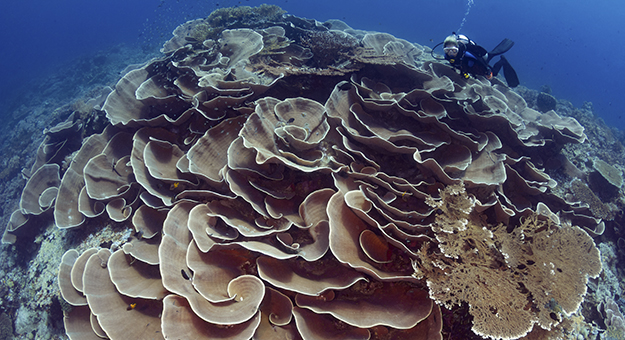
The unique rose shaped coral formation at Roma is just one of the many features that make this one of Indonesia’s finest dive sites. Photo by Walt Stearns
Large schools of fishes such as blackfin and bigeye barracuda, snapper, jack crevalle, turtles and eagle rays patrol the water column above the pinnacle, creating a constant flittering of light on corals. Banded sea snakes poke around the coral foraging for food, and the list of residents includes ribbon eels, scorpion leaf fish, winged pipefish, spindle cowries, carpet anemone shrimps and rockmover wrasses.
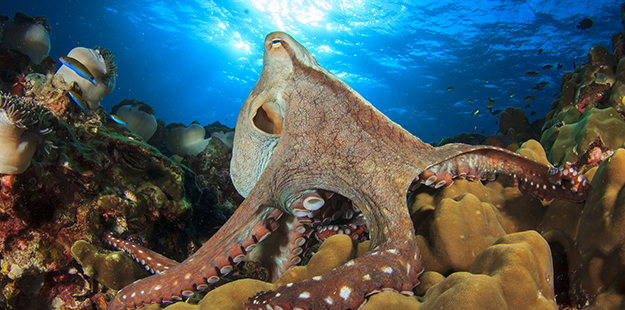
Roma is one of the best sites to find octopus on the prowl during daylight hours. Photo by Rich Carey
This is also one of the best places around Wakatobi Resort to find octopus on the prowl during daylight hours.
More about Roma here.


